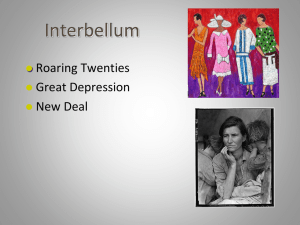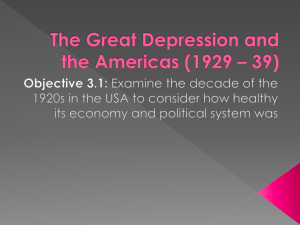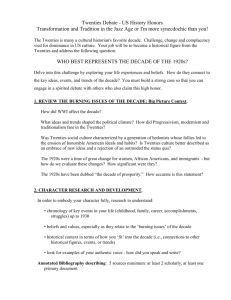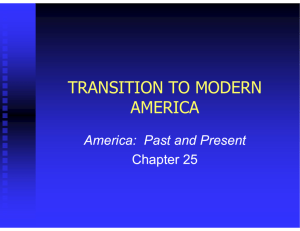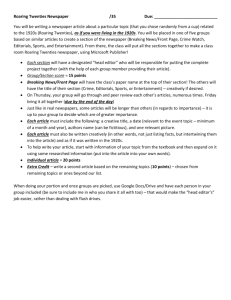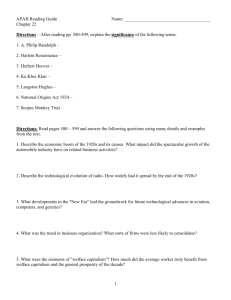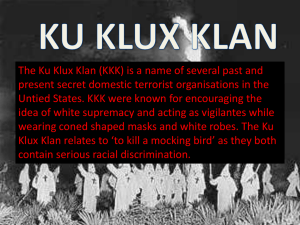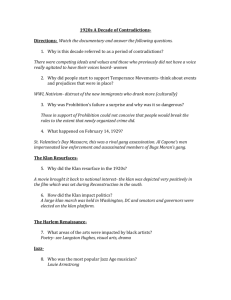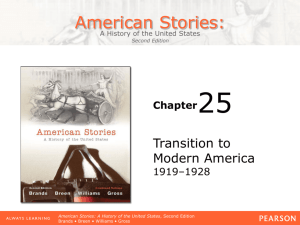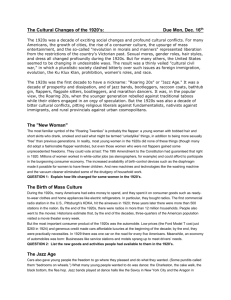The 1920s The Real Deal
advertisement
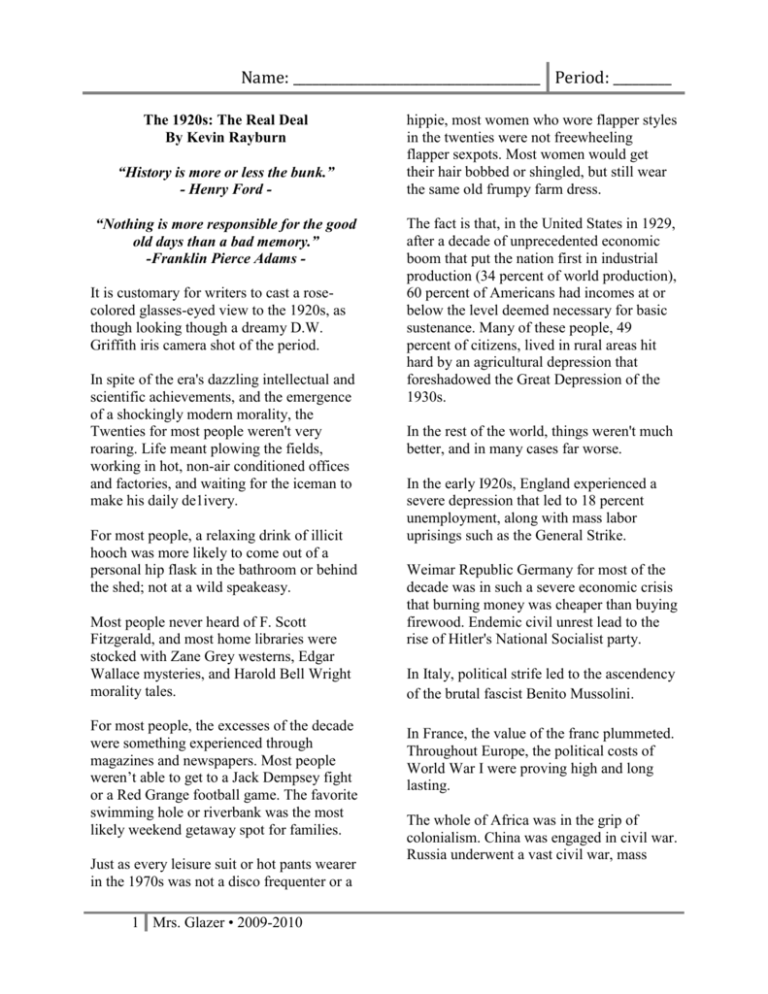
Name: ______________________________________ Period: _________ The 1920s: The Real Deal By Kevin Rayburn “History is more or less the bunk.” - Henry Ford “Nothing is more responsible for the good old days than a bad memory.” -Franklin Pierce Adams It is customary for writers to cast a rosecolored glasses-eyed view to the 1920s, as though looking though a dreamy D.W. Griffith iris camera shot of the period. In spite of the era's dazzling intellectual and scientific achievements, and the emergence of a shockingly modern morality, the Twenties for most people weren't very roaring. Life meant plowing the fields, working in hot, non-air conditioned offices and factories, and waiting for the iceman to make his daily de1ivery. For most people, a relaxing drink of illicit hooch was more likely to come out of a personal hip flask in the bathroom or behind the shed; not at a wild speakeasy. Most people never heard of F. Scott Fitzgerald, and most home libraries were stocked with Zane Grey westerns, Edgar Wallace mysteries, and Harold Bell Wright morality tales. For most people, the excesses of the decade were something experienced through magazines and newspapers. Most people weren’t able to get to a Jack Dempsey fight or a Red Grange football game. The favorite swimming hole or riverbank was the most likely weekend getaway spot for families. Just as every leisure suit or hot pants wearer in the 1970s was not a disco frequenter or a 1 Mrs. Glazer • 2009-2010 hippie, most women who wore flapper styles in the twenties were not freewheeling flapper sexpots. Most women would get their hair bobbed or shingled, but still wear the same old frumpy farm dress. The fact is that, in the United States in 1929, after a decade of unprecedented economic boom that put the nation first in industrial production (34 percent of world production), 60 percent of Americans had incomes at or below the level deemed necessary for basic sustenance. Many of these people, 49 percent of citizens, lived in rural areas hit hard by an agricultural depression that foreshadowed the Great Depression of the 1930s. In the rest of the world, things weren't much better, and in many cases far worse. In the early I920s, England experienced a severe depression that led to 18 percent unemployment, along with mass labor uprisings such as the General Strike. Weimar Republic Germany for most of the decade was in such a severe economic crisis that burning money was cheaper than buying firewood. Endemic civil unrest lead to the rise of Hitler's National Socialist party. In Italy, political strife led to the ascendency of the brutal fascist Benito Mussolini. In France, the value of the franc plummeted. Throughout Europe, the political costs of World War I were proving high and long lasting. The whole of Africa was in the grip of colonialism. China was engaged in civil war. Russia underwent a vast civil war, mass Name: ______________________________________ Period: _________ starvation, then reeled from the first murderous purges of Joseph Stalin. And people trying to flee from the horrors of the rest of the world didn't find the United States rolling out the welcome mat. The U.S. became insular, isolationist-passing severe anti-immigration laws to keep out nonwhites and those whose ideas clashed with conservative views. Federal law enforcement purged communists and radicals. Socialists duly and legally elected to legislatures were promptly denied their posts by governmental bodies. Washington itself was rife with scandal that reached all the way to the door of the Oval Office, and high government officials were put on trial for bribery. Harassment of minorities was so bad that the state of Oklahoma had to declare martial law to contain the frenzied activity of an alarmingly huge and brazen Ku Klux Klan that increased its national membership from 2,000 in 1920 to several million by 1924.In Rosewood, Florida in 1923, a white mob murdered 8 innocent blacks and burned the town to the ground after a dubious rape allegation. The degree to which criminal organizations and hate groups infiltrated and controlled the apparatus of government in the U.S. in the 1920s is frightening to contemplate. In Indiana, the government was in the pocket of the Klan and in Chicago Al Capone's organized crime network ruled the political machinery via graft. The prosperity of the twenties did make cars, home appliances, and junk food more available to the masses, but the economy producing that prosperity was built more on dreams than on real value. Easy credit put 2 Mrs. Glazer • 2009-2010 average people in unprecedented personal debt. The bull stock market was largely an illusion, driven by wildly overvalued stocks. On the social front, there was undoubtedly a push by the new order of artists, thinkers, and political leaders to eradicate Victorian mores. While the modern thinkers of the twenties may captivate our imaginations today, the battle for the hearts and minds of the populace at the time was decisively won by the forces of tradition. Prohibition was the law of the land, regardless of its widespread flouting. The Ku Klux Klan, using traditional values as its mantra, ballooned. Hollywood adopted strict self censorship to appease sensibilities. Tent evangelists preaching old-time religion, such as Billy Sunday and Aimee Semple Mcpherson, were the rage. John T. Scopes, Clarence Darrow and the ACLU at the famous “monkey trial,” lost the fight over teaching evolution. The Palmer Raids, antiimmigration laws, and the Sacco and Vanzetti trial showed that holding nonmainstream political ideas was dangerous. The gulf between left-wing and right-wing thinking had never before been so wide on so many fronts. That Radclyffe Hall's novel about lesbianism The Well of Loneliness could coexist in parallel time to the bestselling story of Jesus Christ The Man Nobody Knows was something quite new, and frightening, to most people.
